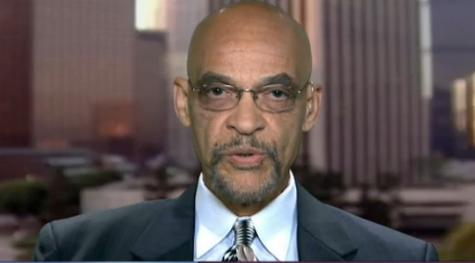Earl Ofari Hutchinson
It was never a question of if but when and how much. The “when” is when the dirt would fly about Botham Jean. The “how much” is how much dirt would be dug up and plastered across the headlines and newscasts about him. Jean is of course the young black businessman gunned down in his own apartment by Dallas police officer Amber Guyger. The first smudge headline was that marijuana was found in his apartment. This was quickly followed by another news flash that two spent cartridges were also found in his apartment.
The crude and clumsy innuendo was that Jean was not the angel in the night that he had at first been depicted as. The even more unstated but lethal message was that Guyger may have had cause to act as she did. That message was bolstered by the repeated massage of the tale of how Guyger got into Jean’s apartment. That it was open and that she was parked on the same level as the apartment and could easily have made the mistake that she claimed she made about being in her apartment. The tale of the circumstances surrounding the deadly train of events is hers, and no one else.
The stories about marijuana and gun casings could only have come from one source. That source is police investigators. This follows the predictable template in murderous police encounters where an officer is hauled on the legal carpet. There will be leaks of any damaging about the victim–any drug use, an arrest record, or marital or family dysfunctionality. The leaks come fast and are well-timed for the maximum media and public impact.
The aim of the sneaky assault on Jean’s character is to deconstruct him as an innocent victim. If enough dirt can be tossed about Jean to cast doubt and suspicion about his character, then maybe there was probable cause to kill. This is exactly what Guyger’s attorney’s will claim, or at the very least, it was purely an accident, tragic, but an accident nonetheless and one for which there is criminal culpability on her part.
The leak and blare in the headlines of anything negative about Jean almost always goes unquestioned at the time. This compounds the damage done since the innuendo of unsavory behavior becomes firmly implanted in the public mind as having some credence. The question of how the marijuana on Jean’s apartment was found and what possible relevance that could have to his killing gets blurred.
The problem though with headlining smear stuff on Jean is that police hold most of the cards in these cases. They know that merely dropping a telltale litany of veiled and not-so-veiled hints, innuendoes, digs, and crass, snide, accusing comments, remarks, slander and outright lies about men like Jean is more than enough to divert, distract, and pollute the air surrounding the killing. The image mugging often works because it rests firmly on the ancient, shop worn, but serviceable litany of stereotypes and negative typecasting of young black males. It’s the shortest of short steps to think that if Jean can be depicted as a caricature of the terrifying image that much of the public still harbors about young black males, then that image seems real, even more terrifying, and the consequences are just as deadly.
The hope was that the election of former President Obama buried once and for all negative racial typecasting and the perennial threat racial stereotypes posed to the safety and well-being of black males. It did no such thing. Immediately after Obama’s election, teams of researchers from several major universities found that many of the old stereotypes about poverty and crime and blacks remained just as frozen in time. The study found that much of the public still perceived those most likely to commit crimes are poor, jobless and black. The study did more than affirm that race and poverty and crime were firmly rammed together in the public mind. It also showed that once the stereotype is planted, it’s virtually impossible to root out. That’s hardly new either.
Numerous studies on racial stereotyping have found that many whites are likely to associate pictures of blacks with violent crime. This was no surprise given the relentless media depictions of young blacks as dysfunctional, dope-peddling, gang bangers and drive-by shooters. Studies have even found that even when blacks don’t commit a specific crime; whites still misidentified the perpetrator as an African-American. Immediately after the election of Obama the researchers still found public attitudes on crime and race unchanged. The majority of whites still overwhelmingly fingered blacks as the most likely to commit crimes, even when they didn’t commit them.
The snide innuendo about Jean and drugs doesn’t change the official record. He was killed not because he was a suspected drug dealer, but he was gunned down while relaxing in his own apartment. To suggest anything else is nothing more than a second slaying of Jean.
Earl Ofari Hutchinson is an author and political analyst. He is the author of Why Black Lives Do Matter (Middle Passage Press). He is a weekly co-host of the Al Sharpton Show on Radio One. He is the host of the weekly Hutchinson Report on KPFK 90.7 FM Los Angeles and the Pacifica Network.

